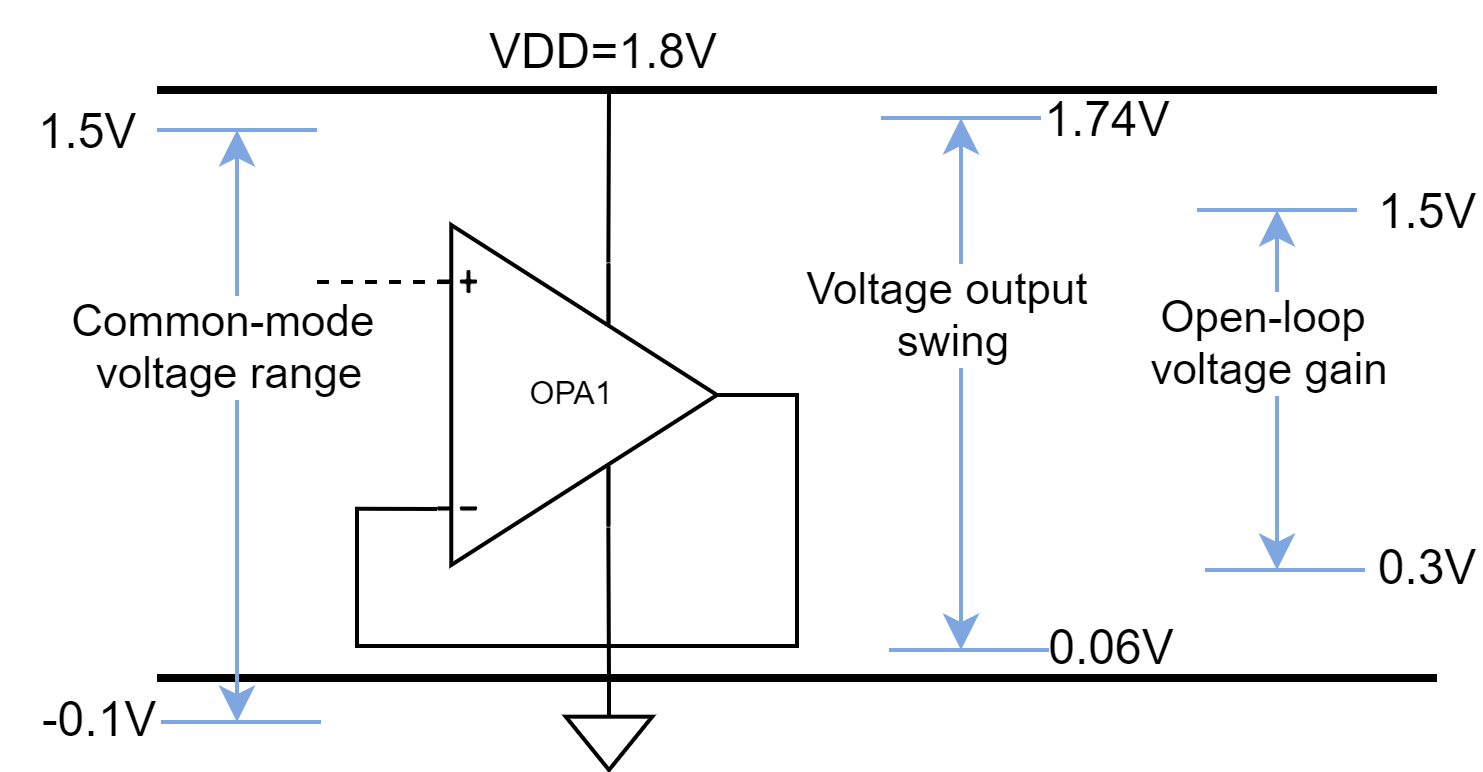SLAAEE6 October 2023 MSPM0L1306 , MSPM0L1306
5.1.1 OPA input and output limitation
OPA has some parameters related to operation limitations. If above the parameters, the linearity of OPA will get worst. That means the detection current is limited to a certain range.
The key parameters are common-mode voltage range and voltage output swing. Figure 5-2 shows the limitation value of MSPM0L130x, when set VDD as 1.8 V and RRI=1. For this device, to reach the typical open-loop voltage gain value on data sheet, output voltage should be controlled into a smaller voltage range (0.3 V ~ VDD-0.3 V) , compared with voltage output swing range. If above the range, the open-loop gain will be decreased. In this current detection demo, it doesn’t take the open-loop gain into consideration which has smaller influence than other two parameters, especially under low gain setting.
 Figure 5-2 MSPM0 OPA Limitation
Figure 5-2 MSPM0 OPA Limitation